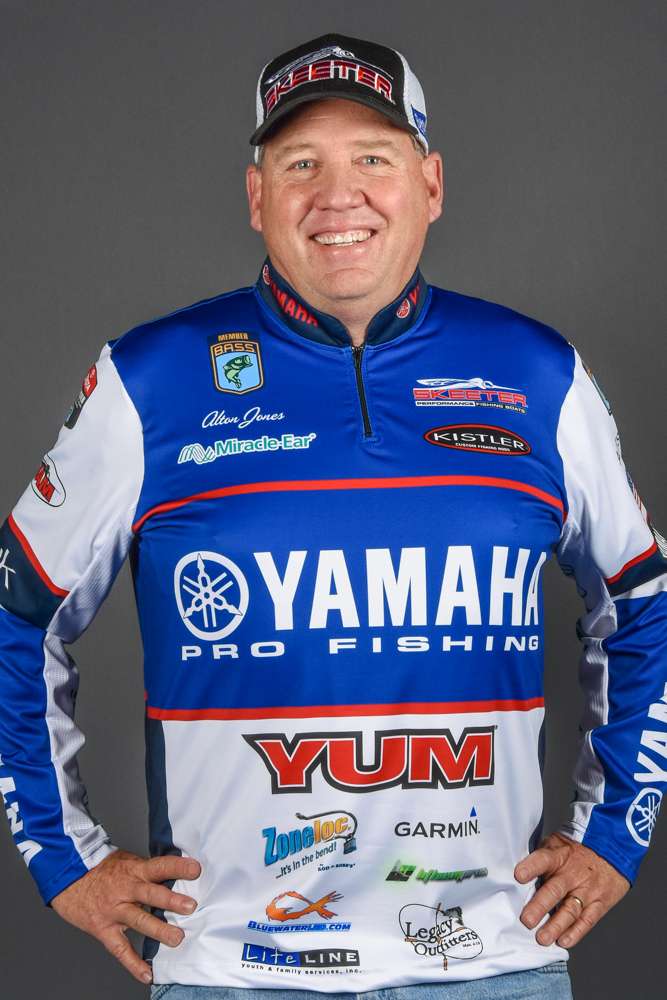I've got a 30-hour drive ahead of me to get to the St. Lawrence River, but I'm excited about going. I'll be counting every second.
Before I leave, though, I've got a pretty long list of honey-do chores around the house. Jimmye Sue and the kids pretty much handle the inside all on their own, but the outside is mine. Before I can hitch up the boat and head north, I need to mow the lawn, do some weed eating, fill the bird feeders and generally get the yard in decent shape. Once that's done, I'll be cleared for takeoff.
I really can't remember the last time I was so excited to go to a couple of tournaments and be on the road for as long as I'll be gone (about three weeks). Of course, there are the Bassmaster Classics — those are special — but I'm really pumped for these last two Elite tournaments.
Maybe it's the smallmouth I'll be chasing. (If you're a regular reader of this column, you know how much I love them.) Maybe it's that we've been off for so long and I've got cabin fever. Maybe it's because I'm having a good year and sitting pretty high in the Toyota Bassmaster Angler of the Year standings.
Whatever the reason, I'm excited and looking forward to finishing the season strong on a couple of exceptional smallmouth fisheries.
And I want you to know that I feel really fortunate to get to fish places like the St. Lawrence and Lake St. Clair as part of my job. I never take that for granted, and I certainly realize that not everyone has that opportunity. Most of you reading this are still in the midst of the dog days of summer and looking for some relief from the heat. If that's you, then the rest of this column should be right up your alley.
Let's change gears from where I'm headed to what you could be doing on your favorite largemouth fishery. If you're like most bass anglers out there, your waters are hot and the fish have been in their summertime haunts for weeks and weeks — deep ledges, humps, maybe some really thick vegetation.
Well, that's about to change, and I want you to take advantage of it. Even though there will be some of those deep schools out there that you've been targeting ever since the postspawn, those fish are about to get harder to locate now that the thermocline has set up on most of our reservoirs.
The water column starts to stratify in the summer, creating three distinct layers. The upper layer has most of the oxygen, but it's hot. The middle layer — the thermocline — has oxygen and cooler water, but that band can be rather narrow and the fish in it will often suspend over extremely deep water, making them tough to locate and catch. The deeper layer is largely devoid of oxygen, so it's pretty much dead.
While your bass club buddies are chasing the Mother Lode in the thermocline and striking out far more often than connecting, I want you to go shallow — really shallow — and target those bass that are feeding around isolated cover. They're there, I promise you, and they're not being pounded by every angler on the water at this time of year. Often, you can have them all to yourself.
I like to create a "milk run" of key isolated cover — a boat dock here, brush pile there, rock pile somewhere else — in one to five feet of water. If I can pinpoint a dozen good spots like that, I know I have a pattern that can win a summertime tournament.
Once I've identified a piece of isolated cover that I think has potential, I'll approach it carefully and quietly. My first cast will be a long one with something like an XCalibur XCS Square Lip Silent Crankbait or a Booyah Buzz buzzbait. That first cast will often catch a bass, but even when it doesn't you'll be surprised at how often a bass will show itself and make it easier to catch him on the next cast.
That's when I like to come back with a weightless Yum F2 Dinger or Texas-rigged ribbontail worm. A good follow-up bait will usually catch the bass you miss on the first cast.
And if you catch a good bass off a piece of shallow isolated cover at this time of year, be sure to let it rest for an hour or so and then come back. Whatever held that first good one, will surely appeal to another fish, too. Good places will reload in a hurry.
Good luck with this pattern! I've got some yard work and driving to do.





